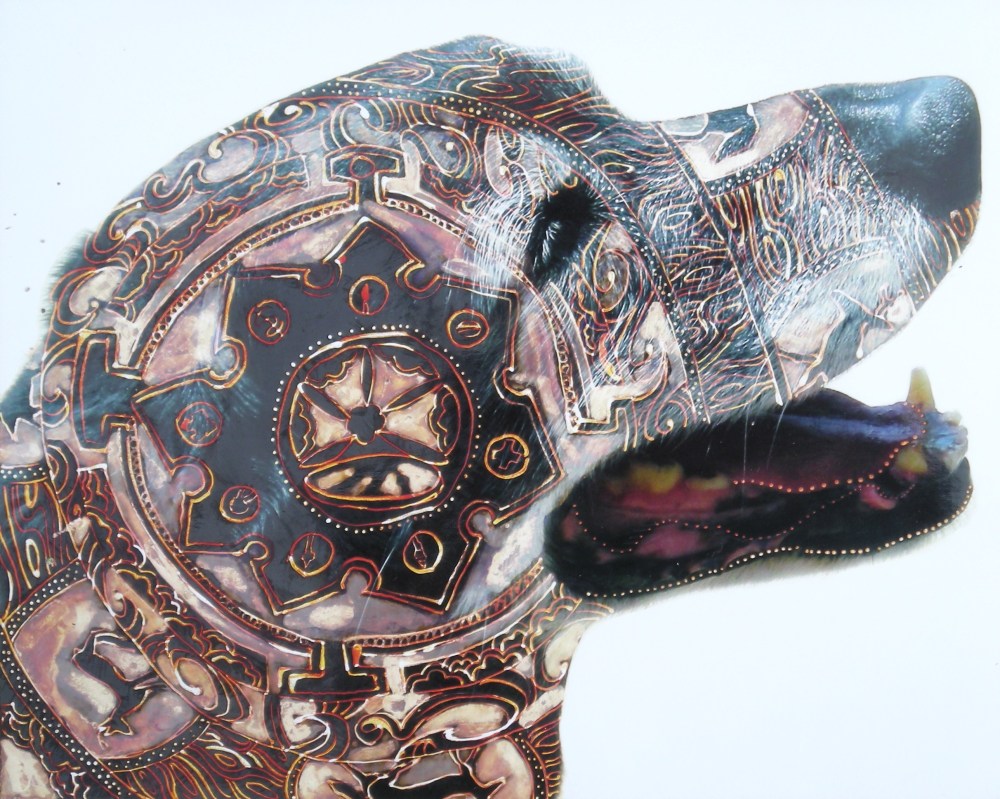 |
| Pele' as a Mandala-mixed media photograph |
After viewing a documentary on the Medici family of medieval
Florence, I can’t help think about the enormous contributions
the period has made to western art. It was a heady time for
painting during which artists such as Michelangelo, Da Vinci,
and Botticelli rose to prominence. Some of our most revered
names gained recognition under the protection and patronage of
the ruling Medici family. The cocktail for success seemed to be
a mix of tolerance and patronage and it gave rise to one of the
most productive and influential periods in all of art history.
The Medicis were a merchant family that rose to prominence
over successive generations. They gained power in the city
of Florence and were able to hold onto their ruling status with
two family members eventually becoming popes (albeit bad ones).
The medici popes were so corrupt that Martin Luther, after visiting
Rome and viewing their excesses first hand, began his prolific
demands for reform eventually resulting in the sack of Rome.
over successive generations. They gained power in the city
of Florence and were able to hold onto their ruling status with
two family members eventually becoming popes (albeit bad ones).
The medici popes were so corrupt that Martin Luther, after visiting
Rome and viewing their excesses first hand, began his prolific
demands for reform eventually resulting in the sack of Rome.
Intrigue and corruptions aside, the Medicis loved and
nurtured
art, extending their patronage to artists throughout successive
generations of their rule. Artists were feted and coddled and
it was through this financial stability that some of our most
beloved masterpieces were born.
art, extending their patronage to artists throughout successive
generations of their rule. Artists were feted and coddled and
it was through this financial stability that some of our most
beloved masterpieces were born.
Another factor in the genesis of these works was the
tolerance
that the Medicis showed their artists. Artist were allowed to
depart from the prevailing religious topics of the period and
works such as Botticcelli’s Birth of Venus were created. Without
the strict dictations of the church, artists were freer to unleash
secular creativity.
that the Medicis showed their artists. Artist were allowed to
depart from the prevailing religious topics of the period and
works such as Botticcelli’s Birth of Venus were created. Without
the strict dictations of the church, artists were freer to unleash
secular creativity.
Interestingly, Machaveli’s novel The Prince was also created
during the time as a treatise and commentary on the ruthless,
cruel and cutthroat governing style of the Medici family. From
a vipers nest came some of the most sublime and tender works
of art the world has known.
during the time as a treatise and commentary on the ruthless,
cruel and cutthroat governing style of the Medici family. From
a vipers nest came some of the most sublime and tender works
of art the world has known.
I’m not sure we today could ever reach the standards and
output
of the artists of the Medici period. In our country we have the
freedom but not the governing patronage, in other countries
there may be the patronage but not the freedom.
of the artists of the Medici period. In our country we have the
freedom but not the governing patronage, in other countries
there may be the patronage but not the freedom.


